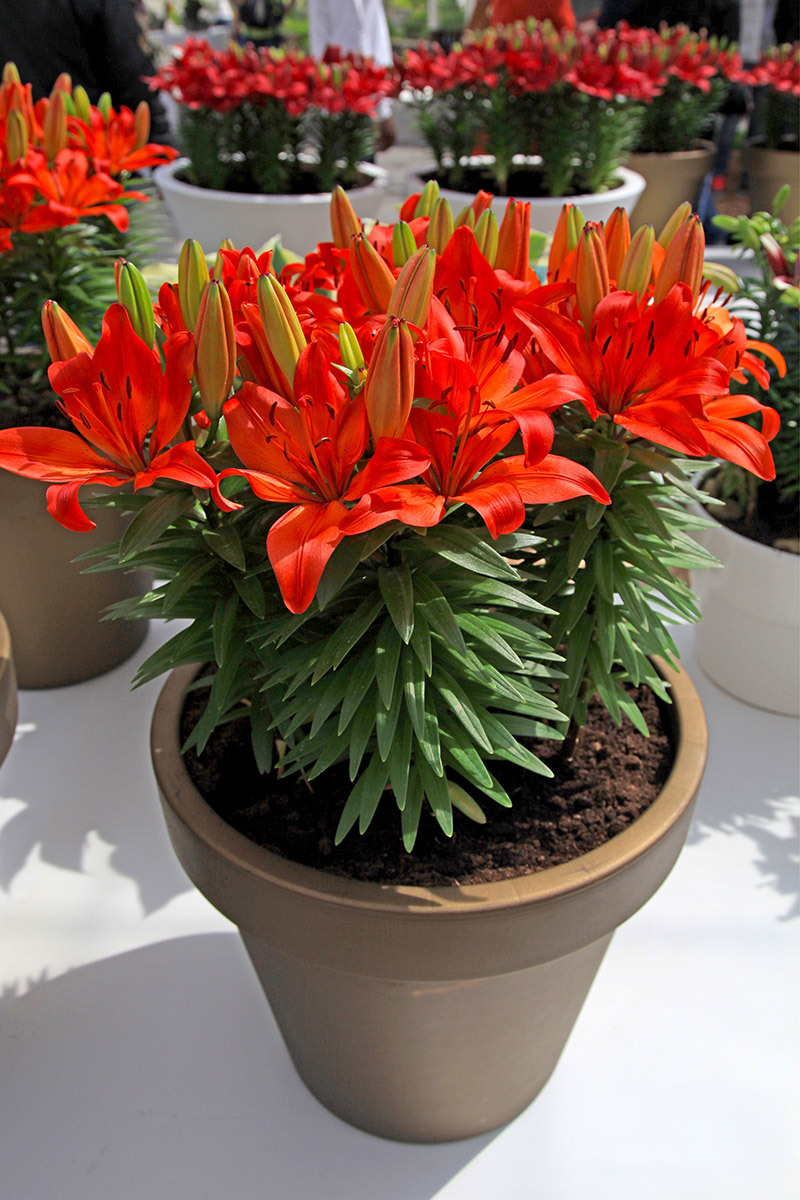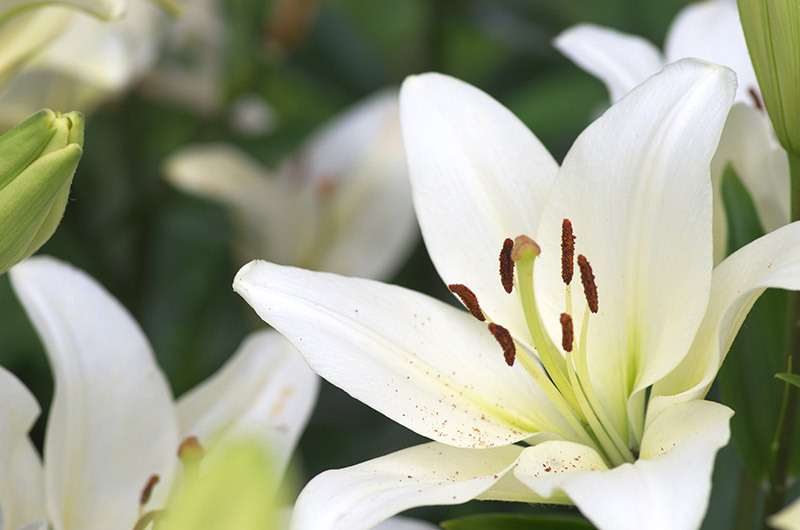Delve into the Lesser-Known World of Tulips: Seven Facts
Posted on 01/07/2025
Delve into the Lesser-Known World of Tulips: Seven Facts
Tulips are adored for their vibrant colors, elegant shapes, and iconic presence in spring gardens across the world. However, behind their beauty lies a fascinating, lesser-known world teeming with historical intrigue, biological uniqueness, and hidden wonders. If you think you know everything there is to know about tulips, prepare to be surprised! In this comprehensive, SEO-optimized article, we'll delve into the untold stories, rare discoveries, and surprising facts about this beloved bloom. Here are seven intriguing facets of tulips that will deepen your appreciation for these remarkable flowers.
1. Tulips Once Cost More Than Gold: The Tale of Tulip Mania
When exploring the hidden world of tulips, one cannot ignore the phenomenon known as Tulip Mania. In the early 17th century, tulips became so highly valued in the Netherlands that their bulbs were treated as a luxury commodity--and, at the height of the craze, a single tulip bulb could cost as much as a luxurious canal house in Amsterdam! This period, known as Tulip Mania (1634-1637), is often cited as one of the first recorded speculative bubbles in history.
How Did Tulip Mania Unfold?
- The tulip's arrival: First introduced to Western Europe from the Ottoman Empire in the 16th century, tulips quickly became a status symbol among the wealthy.
- Speculation and social status: As the desire to own unique tulip varieties intensified, prices soared and bulbs changed hands for astronomical sums.
- Collapse and aftermath: By 1637, the market collapsed, leaving many investors bankrupt, but tulips remained cherished garden gems.
This intriguing episode not only reflects the historical importance of tulips, but also marks them as an enduring symbol of beauty, luxury, and human folly.

2. The Diverse Origins of Tulips: A World Wide Journey
Although the Netherlands is popularly associated with tulip cultivation, the origin of tulips traces back much further east. Understanding the global roots of tulips reveals how this flower traversed continents and cultures, gathering legendary tales along the way.
Tulips Across Continents
- Central Asian Origins: Tulips (genus Tulipa) are indigenous to a belt stretching from Central Asia to southern Europe. The wild species still bloom on the mountainsides of Kazakhstan, Iran, and northern China.
- Ottoman Legacy: The flower was cherished in the Ottoman Empire, with sultans cultivating extravagant gardens. The word "tulip" itself comes from the Persian word "delband," meaning turban, due to the flower's turban-like shape.
- European Arrival: Tulips reached Vienna in the 1550s, brought by botanist Carolus Clusius, who later started Europe's first public tulip garden at Leiden University.
What makes tulips remarkable is their journey from rugged wilderness to ornate palaces and, ultimately, to the fields and gardens we cherish today.
3. Shapes, Sizes, and Surprises: The Astonishing Diversity of Tulips
Far more than just the classic cup-shaped bloom, the lesser-known varieties of tulips offer an astonishing array of forms, colors, and textures. Each has its own story and appeal, making tulips an endlessly fascinating subject for gardeners and botanists alike.
Types of Tulips Beyond the Ordinary
- Wild Tulips: Species tulips (also called botanical tulips) tend to be smaller but display vivid, striking colors. Tulipa tarda and Tulipa clusiana are favorites among collectors.
- Parrot Tulips: These are known for their frilled and feathered petals, often in dramatic color combinations--like red and yellow or green and pink.
- Double Tulips: Called "peony-flowered tulips," these lush, multi-petaled blooms resemble roses or peonies.
- Rembrandt Tulips: Named after the famed painter, these tulips feature stunning streaks and flames caused by a harmless mosaic virus.
- Lily-Flowered Tulips: Noted for their pointed, gracefully arching petals, giving them an elegant silhouette.
Tip: For gardeners seeking something truly unique, many rare tulip cultivars can be grown from specialized nurseries--perfect for adding exotic flair to spring displays.
4. Tulips in Cuisine: Edible Petals and Culinary Curiosities
Did you know that tulips are not just beautiful, but also edible? While most know them as ornamental flowers, tulips have a surprising place in culinary history, especially in times of hardship.
Tulips on the Table
- Wartime Survival: During World War II and the Dutch Hunger Winter (1944-1945), people ate tulip bulbs to survive food shortages. Although most bulbs contain mild toxins, they were boiled, roasted, and even ground into flour.
- Petal Delicacies: Some tulip petals are safe to eat in moderation and can add color to salads or be candied for desserts, offering a mild, sweet flavor.
- Important Cautions: Certain cultivars may cause allergic reactions; always confirm edibility with a botanist before trying any plant-based delicacies.
Today, chefs use tulip petals as edible garnishes for fine dining and artistic desserts, taking the flower's allure from the garden into gourmet cuisine.
5. The Tulip's Secret Language: Symbolism and Meaning
Step into the symbolic world of tulips and discover how these flowers convey messages of love, hope, and renewal. The symbolism of tulips goes far beyond mere beauty--and is rooted in centuries-old tradition.
What Do Tulips Signify?
- Universal Love: Red tulips are a classic symbol of deep love and romance, second only to the rose in Valentine's Day bouquets.
- Cheer and Hope: Yellow tulips are associated with happiness, renewal, and positive energy--perfect for brightening homes after a long winter.
- Loyalty and Charity: White tulips express forgiveness, purity, and enduring friendship, often featured at weddings and memorials.
- Elegance and Grace: Pink tulips symbolize affection and good wishes, ideal for celebrating birthdays and milestones.
In various cultures, the hidden meanings of tulips have inspired poetry, artwork, and even diplomacy, establishing tulips as one of the most meaningful flowers in the world.
6. Tulips as Environmental Indicators and Biodiversity Heroes
Beyond their stunning looks, tulips play an important role in environmental health and biodiversity. Certain wild species are bio-indicators, meaning their presence signals the quality and sustainability of the local ecosystem.
Conservation Matters
- Rare and Endangered: Some wild tulip species face extinction due to habitat loss, overharvesting, and climate change. The International Union for Conservation of Nature (IUCN) lists dozens as threatened.
- Ecosystem Benefits: Native tulips support pollinators like bees and butterflies, helping to sustain vital insect populations.
- Restoration Projects: Conservationists are working to restore tulip-native habitats in Central Asia and the Mediterranean, highlighting the importance of protecting these floral treasures.
When you choose to plant wild or heirloom tulips in your garden, you are contributing to the protection of biodiversity and helping these spectacular plants thrive for future generations.

7. Modern Marvels: Tulips in Art, Technology, and Space
The allure of tulips extends far beyond botanical gardens; they inspire artists, scientists, and even astronauts! In the modern world of tulips, their influence has become truly universal.
Tulips Reach New Heights
- Tulips in Art: From Dutch Golden Age paintings to Turkish ceramics, tulips are an enduring muse for creative expression.
- Science and Genetics: Today, horticulturalists use advanced genetic mapping and cross-breeding techniques to develop new tulip varieties with resistant traits and dazzling colors.
- Tulips in Space: In 1997, tulip bulbs traveled to the International Space Station on the "Spacelab" mission. Scientists monitored their growth in zero gravity to better understand plant biology in outer space!
With every innovation and artistic flourish, tulips continue to capture human imagination--proving their status as flowers of wonder and versatility.
Conclusion: Rediscovering the Depths of Tulip Wonder
The next time you stroll past a vibrant display of tulips, remember that you're not just seeing a pretty flower--you're witnessing centuries of history, cultural exchange, scientific discovery, and natural artistry interwoven in each bloom. Delving into the lesser-known world of tulips reveals stories of survival, intrigue, diversity, and endless beauty, making them much more than a garden mainstay.
- From their tumultuous economic past to their life-saving versatility, tulips have proven themselves resilient and vital in ways far exceeding their ornamental value.
- As environmental indicators, they remind us of our responsibility to safeguard natural heritage and foster biodiversity.
- As cultural icons, they bring people together from continents apart, inspiring awe and joy everywhere they grow.
Whether you are a passionate gardener, a history buff, or simply a fan of beautiful things, tulips offer a world of discoveries just waiting to be unraveled. So, go ahead--plant a bulb, enjoy their colors, and share these stories. You're now part of an ancient and ongoing adventure in the lesser-known world of tulips!







